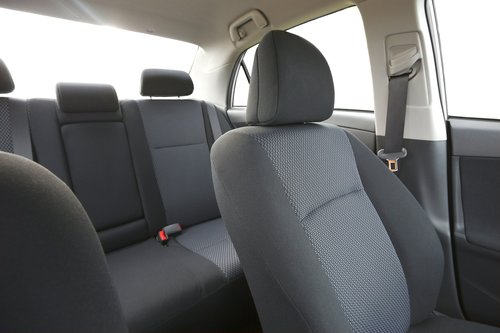
Ford Motor Company is recalling certain 2018-2020 F-150 and 2019-2020 F-250, F-350, F-450, and F-550 Super Duty pickup trucks, and 2018-2019 Ford Explorer and 2019-2020 Expedition vehicles equipped with driver and/or passenger’s manual front seat back recliner mechanisms. This recall also includes certain 2020 Ford Explorer and Lincoln Aviator vehicles equipped with rear outboard seats and manual seat back recliner mechanisms.
According to the National Highway Traffic Safety Administration, the recliner mechanisms may be missing the third pawl required for seat back strength, resulting in a loose seat back. As such, these vehicles fail to comply with the requirements of Federal Motor Vehicle Safety Standard (FMVSS) 202 “Head Restraints” and 207 “Seating Systems”. A seat back with an improperly assembled recliner mechanism will have reduced strength and may not adequately restrain an occupant in a crash, increasing the risk of injury.
According to documents submitted by Ford to the National Highway Traffic Safety Administration, on July 23, 2019, a concern related to improperly assembled manual seatback recliners was brought to Ford’s Critical Concern Review Group (CCRG) for review. A supplier had notified Ford of one 2020 MY Explorer rear seat recliner that exhibited excessive movement. Inspection of the seat found that the recliner cam was off center due to a missing third pawl. According to Ford, three warranty reports potentially exhibiting this condition were identified.
Further investigation found a setup issue on a specific production line at the recliner mechanism supplier. As a result, front seat testing was conducted and it was determined that the improperly assembled front seatback recliner would not meet the requirements of FMVSS. On August 21, 2019, Ford’s Field Review Committee approved the recall.
A common cause for fatal and serious injury in rear-end crashes involves the movement of an occupant toward the rear interior of the vehicle, due to the failure of the seat to contain the occupant. It is a fundamental principle of occupant crash protection that seat backs must perform the same restraint function for occupants in rear-end collisions that seat belts provide in front-end collisions. In April 1969, the Society of Automotive Engineers Journal published an article authored by D.M. Severy, which stated, “[a] properly structured seat is to the motorist in a rear-end collision what the lap belt is to him in a head-on impact.”
The logic is simple, during a rear-end impact, the rear of the vehicle is accelerated by the impact, and the resulting motion of the occupants within the vehicle is dictated by the laws of physics, which results in a rearward motion of the occupants with respect to the interior of the vehicle. This motion causes the occupant to “load” the seatback, which must effectively manage the loading to properly restrain and protect the occupant during the crash. In other words, during a rear-end collision, seats must remain upright to prevent the occupants from being ejected. If your seat brakes in a rear-end collision – it is defective. Langdon & Emison can help you recover for your injuries by suing the automotive manufacturer.

